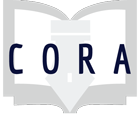Students will generate a well-reasoned conclusion in a two-page paper in which they identify a "good" Internet source and a "bad" Internet source, using IL source evaluation terminology (outlined in CRAAP) to guide their writing.
They will then explain why the good source should be used to investigate the chosen topic, and why the bad source should not be used in their investigation.

